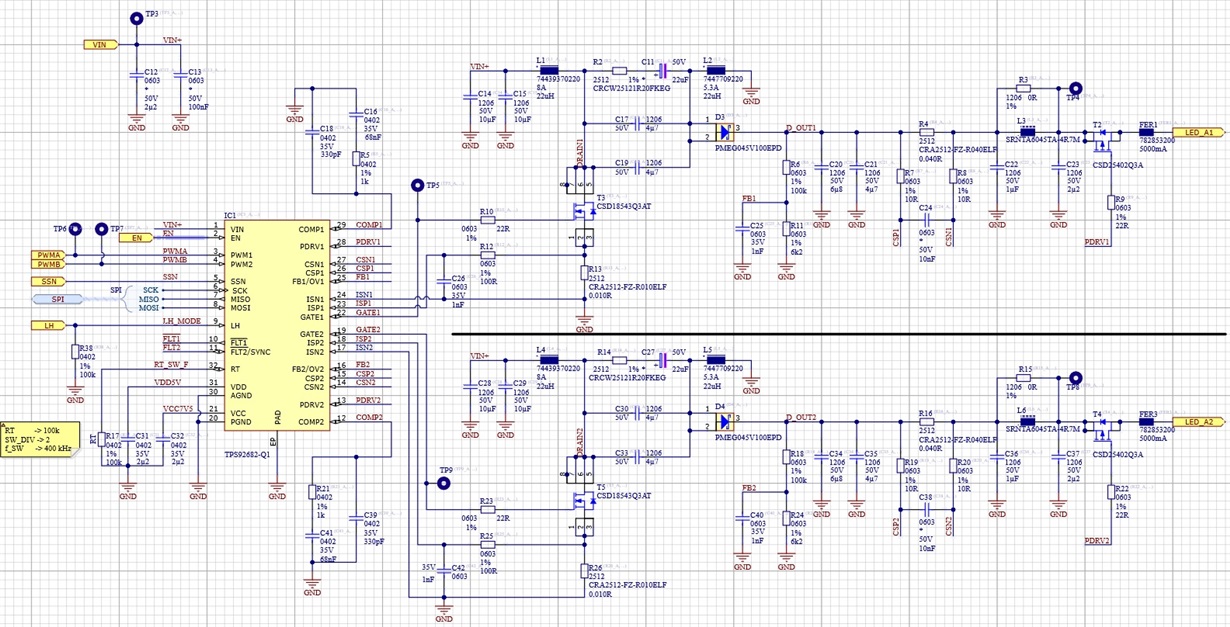Hi everyone!
Can you please help me with my problem on ramp up PWM?
After initialization the TPS92682-Q1 in CV-Mode and will ramp up the PWM duty cycle from 0% to x%, the LED will be flickering in the first. If we go back to 0% and start again to increase the duty cycle, there is no problem.
The curcuit is a SEPIC converter similar the TI Reference desing TID-050029 45-W, 15-W dual SEPIC LED driver reference design for automotive lighting.
We use it in CC and CV Mode and have an Output for max. 4A or 16V.
Thanks Andreas!


